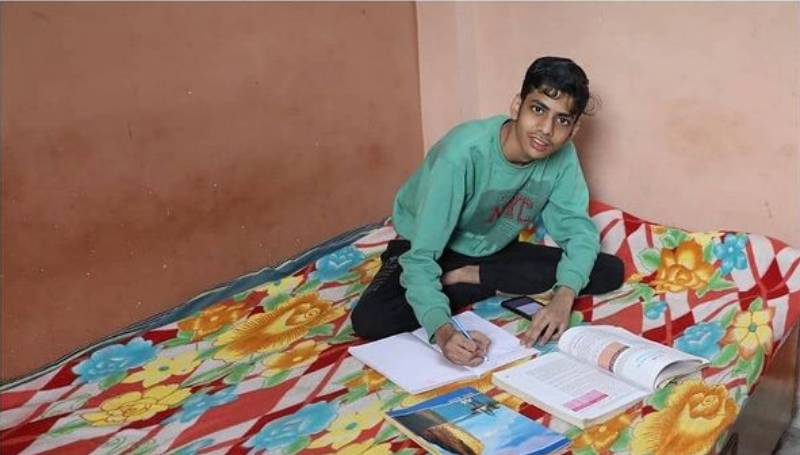Rising unemployment in India’s education sector during Covid-19 pandemic
Ever since the pandemic hit the globe and forced closure of schools, several studies have revealed the negative effects of school closures on students. But, here in India, the burden and pressure of school closures and online classes has also been has felt by the teachers, who are struggling to adapt to the new rules of the game.
With 3.5 pc of GDP devoted to education in terms of public spending, India figures near the bottom of the pile, even though most experts have long been calling for increasing it to 6 pc. At a time when most schools lack even basic amenities like washrooms or blackboards, let alone computers or access to e-learning.
Thus when without any warning, education forcibly shifted from classroom to online, it caught most schools, students and teachers across India off guard as they simply weren’t prepared for the sudden changes in learning methods. The social aspect of a classroom environment and the freedom and space to move around was suddenly missing.
“I was really struggling, especially in the beginning because of technical reasons, and because it’s hard to interact with students one-on-one,” Jayeeta Ghosh, a mathematics teacher at a CBSE school in Pune, tells Media India Group. “The interactive nature of student-teacher relations is not possible on a Zoom call.”
Besides, several states have imposed certain changes to deal with the shift to online education. “At our school they have merged two classes, so instead of 30 students there are 60 students now. So that’s very difficult to deal with. Every state has own set of rules; in Maharashtra, I think students in primary are allowed to have around two hours of online sessions only, so it’s hard to make them understand everything in just thirty minutes, and make it more interactive rather than just dictating things to them,” Ghosh explains.
The unprecedented lockdown caused major uncertainty about the future and left teachers ill equipped to handle the sudden changes of the new systems and regulations. Older teachers especially, who have already had to relearn traditional chalkboard instruction to using computers and projectors, are having to adapt yet again with less training this time, as well as with no proper equipment. This also takes a toll on mental health and exhaustion.
“Not only technological abilities, but many of our teachers don’t have laptops – they don’t have a proper device to connect so they are taking classes through their mobile phones,” says Ghosh. “Not everyone is able to purchase a laptop, especially during these hard times, and teachers usually are not well-paid, so often they don’t want to spend so much on this, thinking that it is a temporary solution. You can’t even keep track of what students are doing in so many tiny little screens, so often you think at the end of the day like ‘the students didn’t understand anything today, I didn’t teach them properly’ and you feel guilty,” she adds.
Although schools have tried to improve the quality and ease of online education, user-friendly methods of learning and teaching are often still missing, and the attempt to rectify this causes more problems in some cases.
“Every day, they are coming up with new applications with which we can conduct classes, but they aren’t really completed apps (the UI is not well coded) and new features are being added constantly, so it creates a huge challenge for the teachers who are not technologically proficient,” says Ghosh.
Job insecurity among teachers
The pandemic has also taken its toll on the employment as hundreds of millions of jobs were lost last year. The spectre of unemployment has not spared teachers either. Some of the most common instances of teachers being laid off are those of substitute and temporary teachers, and some accuse schools of trying to cut expenses using the pandemic as an excuse.
Harish Shukla, a former Physical Education (PE) teacher at a school in Gurugram, was let go from his job last year. Now, when school closures are showing no signs of easing, and as the pandemic’s second wave rages on, he feels desperate about when he can be employed again.
“Schools are trying to cut costs because they feel that subjects like mine are not important. A few other teachers also lost their jobs, for example in our school, some people in the computer department and some who are hired on a contractual basis, they were told that their services are not required,” says Shukla.
“For certain subjects like PE, the general impression is that online classes are not even needed, not to mention not all students will have equipment or space at home like we do at school. But extracurricular activities are actually very important in the overall well-being and development of children in school,” he adds.
The lack of teachers being hired causes problems for the other teachers as well, who have to make up for the gap. “So many positions are vacant because they are not recruiting, so we are forced to take the additional burden on our shoulders,” says Ghosh.
This job insecurity also extends to teachers outside the school system. Anita Singh, a resident of Delhi, gives tuitions for Physics and Chemistry to students in middle and high school from her home.
“When the second lockdown started, because the disease was spreading so much faster this time, I was too worried to allow students to come to my house. I live with my mother, so even I was waiting until she got both vaccine shots since I didn’t want to risk it,” she tells Media India Group. “When I thought about starting again, most of my students had found classes somewhere else.”
Overcoming the digital divide

Helping students catch up on missed work (Photo: Teach for India)
In a country where wage inequality continues to rise sharply every passing year, a great discrepancy can be felt between government institutions and the far more expensive private schools. Namrata Chawla, a class 10 student at Pathways School in Gurugram, says that there was not much change in teaching staff since the start of lockdown last year.
“Our school has tried to keep everything pretty much the same, just virtually. My extracurricular is dance, and my teacher just teaches us on Zoom the same way as others,” she tells Media India Group. “The main issue is attendance; even this year at all my friends’ parent-teacher meetings, the one complaint everyone got was to actually show up to class. The teachers find it really hard to keep students’ attention because it’s so irregular and for a lot of classes only four or five students attend.”
Some NGOs such as Teach For India are doing their best to help out and come together as a community to reduce the gap in the educational sector for both students and teachers from underprivileged areas. In November of last year, the NGO received a grant of INR 220 million to help students gain access to online education, and have helped around 10,000 families get access to devices that are crucial in online learning.
“I think the biggest thing that the government and our country needs is empathy,” Abhik Bhattacherji, director of marketing and communications at Teach For India in Mumbai, tells Media India Group. “The way some teachers are being treated during this situation is ridiculous – they are dying from catching Covid-19 during election duty when they should be given training to handle online teaching instead.”
Bhattacherji explains the innovative measures being taken by teachers of his organisation to help bridge the enormous digital divide in urban communities. This way, even if it is impossible for students to attend live classes, they will still be able to learn the material and keep on track.
“Our fellows and teachers are going above and beyond to help out and make sure learning does not stop, they are making voice recordings of lectures on WhatsApp, Youtube channels with learning materials, creating student-led study groups and partnerships with Xerox offices in those areas so that students get access to worksheets without needing to worry about money,” he says.
NGOs like Teach For India may be able to pitch in and give a helping hand to the teachers allowing them to cope with the after-effects of the pandemic. However, for tens of millions of teachers across India who have long been grossly underpaid or not paid at all, there seems to be no saviour in sight.










